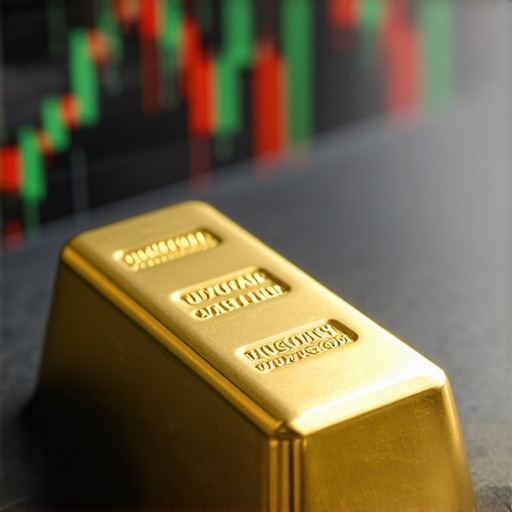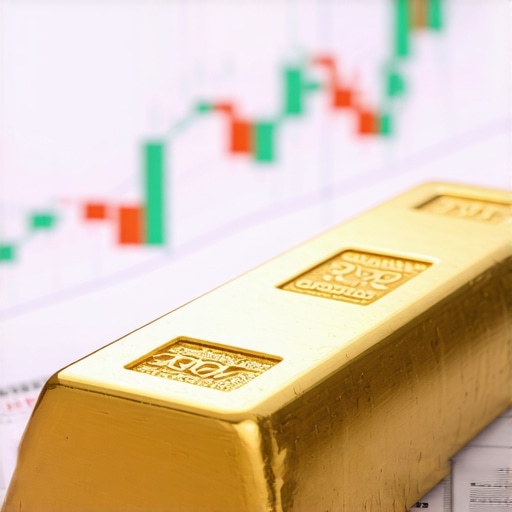Understanding Gold Investment Strategies for 2025
As we approach 2025, the landscape of gold investment is evolving, presenting both challenges and opportunities for investors. Gold has long been seen as a safe-haven asset, especially in times of economic uncertainty. With inflation concerns and potential market volatility on the horizon, now is the perfect time to refine your gold investment strategies. In this article, we will explore key tips that can help you navigate the gold market effectively and maximize your returns.
Why Invest in Gold?
Investing in gold is not just about acquiring a physical asset; it also serves as a hedge against inflation and currency devaluation. Historically, gold has maintained its value over time, making it an attractive option for diversifying your investment portfolio. By incorporating gold into your asset mix, you can protect your wealth and minimize risks associated with market fluctuations. For more insights, check out our post on how gold can serve as a hedge in your investment portfolio.
Key Tips for Successful Gold Investment in 2025
1. Understand Different Forms of Gold Investments
Gold can be purchased in various forms, including physical gold (coins and bullion), gold ETFs, and gold mining stocks. Each type has its advantages and disadvantages. For instance, physical gold provides tangible security, while gold ETFs offer liquidity and ease of trading. To learn more about the differences, visit our guide on physical gold versus gold ETFs.
2. Keep an Eye on Global Economic Indicators
The performance of gold is closely tied to global economic trends. Factors such as interest rates, inflation rates, and geopolitical tensions can greatly affect gold prices. Staying informed about these indicators can help you make timely investment decisions. For an in-depth analysis of how these factors influence gold prices, read our article on how central bank purchases influence gold prices.
3. Diversify Your Gold Investments
While gold is a robust investment, relying solely on one type can be risky. Diversifying your gold holdings—whether through different forms, such as coins and ETFs, or investing in various gold mining stocks—can mitigate risks and enhance potential returns. Explore our insights on investing in gold mining stocks to understand this strategy better.
4. Stay Updated with Market Trends
Gold markets are influenced by a multitude of factors, including market demand, mining production, and changes in investment trends. Keeping abreast of these developments can provide valuable insights into timing your purchases and sales. For predictions and trends in the gold market, check out our analysis on gold price forecasts.
5. Consult with Financial Advisors
Finally, consider consulting with financial advisors who specialize in precious metals. They can provide personalized strategies based on your financial goals and risk tolerance. This guidance can be invaluable, especially in navigating complex market conditions.
In summary, as you refine your gold investment strategies for 2025, remember to understand the various forms of gold investments, stay updated on economic indicators, diversify your holdings, and seek professional advice. By incorporating these tips, you can position yourself for success in the gold market.
Exploring Gold Trading Techniques for Savvy Investors
As you refine your strategies for investing in gold, it’s crucial to understand effective gold trading techniques. Whether you are dealing in gold ETFs, bullion, or mining stocks, knowing the best practices can significantly boost your investment returns. For example, leveraging market timing and understanding trading volumes can help you make more informed decisions. Discover more about advanced trading methods in our post on top gold trading techniques to boost your returns.
The Importance of Gold in a Diversified Portfolio
Incorporating gold into your investment portfolio is not just a trend but a strategic move. Gold acts as a stabilizer during volatile market conditions, providing a safety net for your assets. This is particularly important as we approach uncertain economic times. By ensuring that a portion of your portfolio is allocated to gold, you can mitigate risks associated with stock market fluctuations and currency devaluation. For further insights, check out our article on why gold should be part of your diversified portfolio.
Understanding Gold Futures and Their Role in Investment Strategy
Gold futures are contracts that allow you to buy or sell gold at a predetermined price at a future date. This financial instrument can be a powerful tool for investors looking to hedge their bets or speculate on price movements. However, trading gold futures requires a thorough understanding of market dynamics and risk management strategies. If you’re interested in this approach, our guide on gold futures strategies will provide you with the necessary insights.
Analyzing Global Economic Factors Affecting Gold Prices
To make informed decisions in gold trading, it’s essential to analyze global economic factors that can impact gold prices. Changes in interest rates, inflation, geopolitical events, and currency fluctuations all play a significant role in the valuation of gold. Keeping a close watch on these indicators will enable you to anticipate market movements effectively. For a detailed look at how these factors influence gold prices, read our article on how global events impact gold prices.
Investing in Gold Mining Stocks: A Comprehensive Guide
Investing in gold mining stocks can be a lucrative avenue, as these companies often benefit from rising gold prices. However, this investment type comes with its own set of risks, including operational challenges and market volatility. To navigate this landscape successfully, it’s crucial to conduct thorough research on potential mining companies and their operational efficiencies. For insights on this investment strategy, check out our guide on investing in gold mining stocks.
Utilizing Technical Analysis for Gold Investments
Technical analysis involves studying price charts and market trends to predict future price movements. By using indicators such as moving averages and relative strength index (RSI), investors can make more informed trading decisions. This analytical approach is particularly useful for those trading gold futures or stocks. For a deeper understanding of technical analysis, visit our article on how to track gold price trends.
Consulting with Experts: The Value of Professional Guidance
As you embark on your gold investment journey, consider consulting with financial advisors who specialize in precious metals. Their expertise can help you tailor a strategy that aligns with your financial goals and risk tolerance. With their guidance, you can navigate the complexities of the gold market with greater confidence.
In conclusion, maximizing your returns on gold investments involves a multifaceted approach that includes understanding trading techniques, analyzing global economic factors, diversifying your portfolio, and seeking expert advice. By incorporating these strategies, you can position yourself for success in the dynamic world of gold investing.
Exploring Risk Management in Gold Investments
Risk management is a critical aspect of successful gold trading. By implementing strategies such as stop-loss orders and position sizing, investors can protect their capital and minimize potential losses. Understanding your risk tolerance and setting clear limits on your trades can help you navigate the inevitable ups and downs of the gold market. For further insights into effective risk management techniques, refer to our post on essential techniques for trading gold.
Diversifying Gold Investments: Beyond Bullion and ETFs
While physical gold and ETFs are popular investment choices, diversifying your gold investments can lead to greater stability and growth potential. Consider exploring gold mutual funds or investing in gold mining stocks. These options allow you to tap into different aspects of the gold market, potentially enhancing your overall returns. To learn more about gold mutual funds, check out our article on gold mutual funds: a beginner’s approach for 2025.
Understanding the Role of Gold in Inflation Hedging
Gold has long been regarded as a hedge against inflation. During periods of rising prices, gold often retains its value, making it an attractive investment for those looking to preserve purchasing power. By incorporating gold into your portfolio, you can safeguard your assets against inflationary pressures. Discover more about the relationship between gold and inflation in our post on the role of gold in inflation hedging.
Evaluating Gold Price Forecasts for Strategic Investments
Staying informed about gold price forecasts is essential for making strategic investment decisions. Analysts often consider various indicators, including geopolitical stability and economic trends, to predict future price movements. By aligning your investment strategy with these forecasts, you can capitalize on potential market opportunities. For detailed insights, read our article on gold price forecasts: what to expect this year.
Leveraging Technology in Gold Trading
Modern technology offers numerous tools for gold traders, from advanced charting software to algorithmic trading platforms. Utilizing these tools can enhance your trading efficiency and decision-making process. By adopting technology in your gold trading strategy, you can stay ahead of the competition and respond quickly to market changes. For more information on trading tools, check out our guide on essential gold trading tools every investor needs.
Building a Gold Trading Network
Connecting with other gold investors can provide valuable insights and support. Networking with like-minded individuals allows you to share experiences, strategies, and market knowledge. Joining forums or attending investment seminars can help you build a robust support system in the gold trading community.
In summary, maximizing your returns in gold trading requires a comprehensive approach. By focusing on risk management, diversifying your investments, and leveraging technology, you can enhance your gold investment strategy. Stay informed, connect with others, and continuously refine your techniques to thrive in the dynamic gold market.
Analyzing Gold Demand Trends: What Investors Should Know
Understanding gold demand trends is crucial for making informed investment decisions. Key factors influencing demand include jewelry consumption, industrial applications, and investment purchases. In recent years, the rise of gold-backed exchange-traded funds (ETFs) has significantly impacted how investors approach gold. By evaluating these trends, investors can better anticipate price fluctuations and market dynamics. For a comprehensive overview of demand factors, explore our article on analyzing gold demand trends.
The Importance of Gold in a Diversified Portfolio
Incorporating gold into a diversified investment portfolio is a strategy that many financial experts endorse. Gold can provide a hedge against market volatility and inflation, offering stability when other assets falter. By allocating a portion of your investments to gold, you can enhance your portfolio’s resilience. To understand the broader benefits of this strategy, refer to our post on the importance of gold in your diversified portfolio.
Utilizing Expert Insights for Informed Gold Investments
Staying updated with expert insights and market analyses is essential for effective gold investing. Analysts provide valuable forecasts regarding gold prices and market conditions, which can guide your investment choices. By following industry news and expert opinions, investors can position themselves for future opportunities. To gain a deeper understanding of market insights, check out our detailed guide on gold market analysis.
Gold Trading Techniques: Essential Strategies for Success
Implementing effective gold trading techniques is vital for success in this market. Techniques such as trend analysis, technical indicators, and fundamental analysis can help traders make informed decisions. By mastering these strategies, investors can improve their trading performance and optimize their returns. For more information on trading techniques, visit our post on top gold trading techniques for savvy investors in 2025.
How Global Events Impact Gold Prices
Global events play a significant role in shaping gold prices. Economic instability, geopolitical tensions, and changes in monetary policy can lead to increased demand for gold as a safe-haven asset. By understanding how these factors influence market trends, investors can make strategic decisions regarding their gold investments. For a deeper dive into this topic, read our analysis on how global events impact gold prices.
Preparing for Future Gold Investment Opportunities
As the gold market evolves, staying prepared for future investment opportunities is key. Monitoring economic indicators, emerging trends, and new investment vehicles can help investors identify potential profit avenues. By remaining proactive and adaptable, you can navigate the changing landscape of gold investments effectively. To learn about upcoming opportunities, explore our insights on exploring the best ways to invest in gold today.
Frequently Asked Questions About Gold Investment
What are the main factors influencing gold prices?
Gold prices are influenced by various factors such as economic stability, interest rates, geopolitical tensions, and supply-demand dynamics. Events like inflation or changes in monetary policy can also significantly impact prices.
How can I start investing in gold?
To start investing in gold, you can consider various options such as purchasing physical gold (jewelry, coins, or bars), investing in gold ETFs, or buying shares in gold mining companies. It’s crucial to assess your investment goals and risk tolerance before making a decision.
Is investing in gold a good strategy for beginners?
Yes, investing in gold can be a good strategy for beginners as it serves as a hedge against inflation and market volatility. However, it’s important to educate yourself on market trends and trading techniques to make informed decisions.
What is the difference between physical gold and gold ETFs?
Physical gold refers to tangible gold items like coins and bars, while gold ETFs (exchange-traded funds) are investment funds that track the price of gold and can be traded on stock exchanges. Gold ETFs offer easier liquidity and lower storage costs compared to holding physical gold.
How does gold perform during economic downturns?
During economic downturns, gold often performs well as it is viewed as a safe-haven asset. Investors tend to flock to gold during times of uncertainty, driving up its demand and price, thus providing a buffer against market declines.
What are the risks associated with gold investment?
While gold can be a stable investment, it carries risks such as price volatility, lack of dividends, and storage costs for physical gold. Investors should be aware of these risks and consider their investment horizon before committing funds.
How can I track gold prices effectively?
Gold prices can be tracked through financial news websites, commodity exchanges, and investment apps that provide real-time data. Additionally, subscribing to market analysis newsletters can help you stay updated on price trends.
What role do central banks play in gold investment?
Central banks play a significant role in the gold market by holding substantial gold reserves and making purchases or sales based on monetary policy. Their actions can influence global gold prices and market sentiment.
Are there tax implications for investing in gold?
Yes, there are tax implications for investing in gold, which can vary by jurisdiction. Gains from selling gold are typically subject to capital gains tax, and it’s advisable to consult a tax professional to understand your obligations.
Authority Resources for Gold Investment Insights
For further research and insights into gold investment, consider the following trusted resources:
- Kitco – A leading source for precious metals market news and analysis.
- World Gold Council – Provides comprehensive reports and statistics on gold demand and investment trends.
- Investopedia – Offers educational articles and guides on various investment strategies, including gold.
- Bloomberg Markets – A reliable source for financial news, including updates on gold prices and market conditions.
- Reuters Markets – Provides up-to-date news and analysis on financial markets, including precious metals.
Conclusion: Making Informed Gold Investment Decisions
As you navigate the complexities of gold investment, understanding market trends, effective trading techniques, and expert insights is essential. Gold remains a valuable asset for diversifying portfolios and hedging against economic uncertainty. By staying informed and leveraging reliable resources, you can make strategic investment decisions that align with your financial goals. Embrace the potential of gold as a significant component of your investment strategy and watch your portfolio flourish.











I’ve been diversifying my portfolio with gold for a few years now, and this detailed breakdown of gold investment strategies for 2025 really resonates with my experience. Understanding the differences between physical gold, ETFs, and mining stocks is crucial. Physical gold offers that tangible sense of security, but ETFs provide the liquidity that’s valuable for reacting quickly to market changes. What I find particularly important is staying alert to global economic indicators—recent fluctuations in interest rates and geopolitical tensions have definitely influenced gold prices, as this article points out. I also appreciate the emphasis on risk management; incorporating stop-loss orders and proper position sizing can really help protect capital during volatile times. Consulting with financial advisors who specialize in precious metals has personally helped refine my approach, especially when considering gold futures and more advanced trading techniques. It’s also worth noting the role technology plays today, such as using sophisticated charting tools and real-time analytics, which can give investors an edge. Overall, these comprehensive insights deepen the understanding needed to navigate the ever-changing gold market effectively.